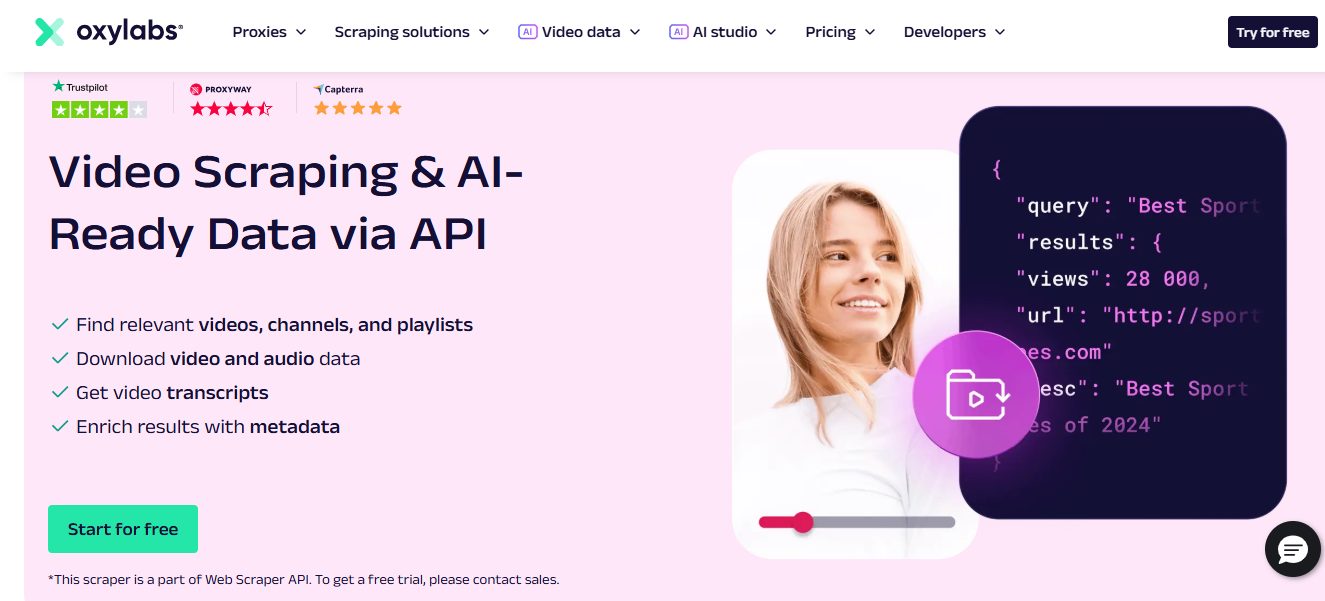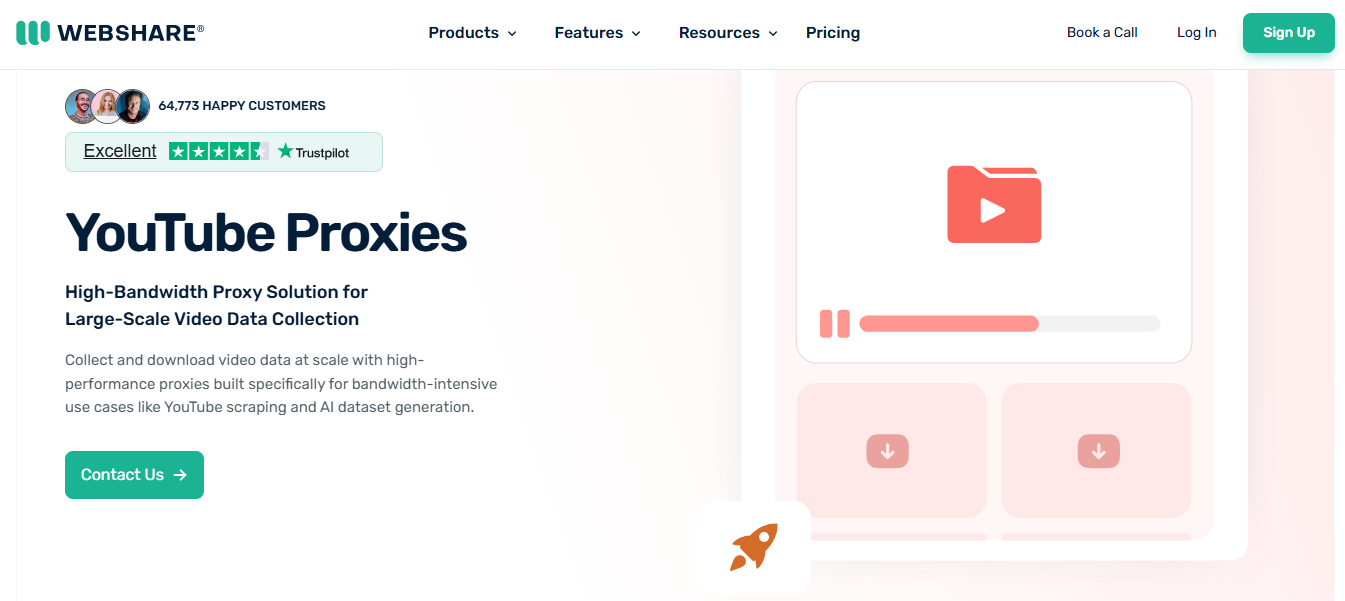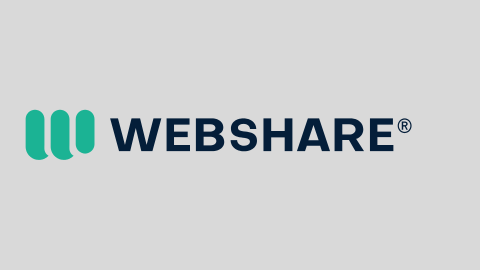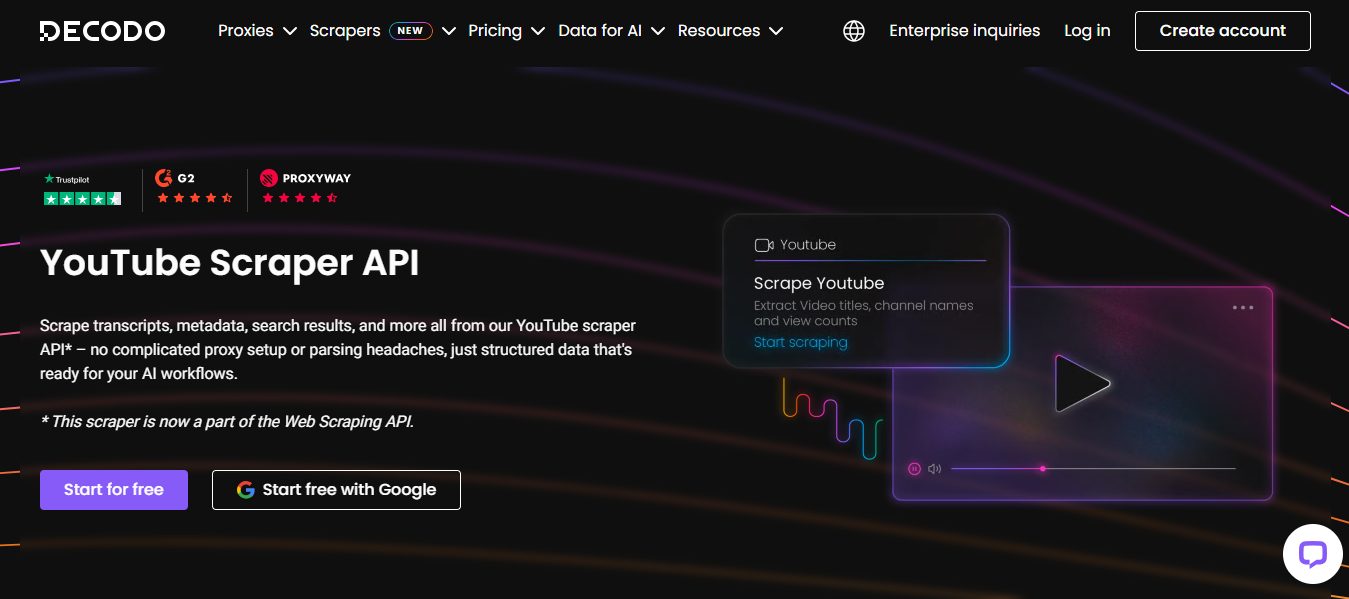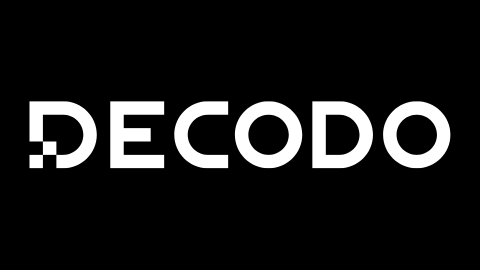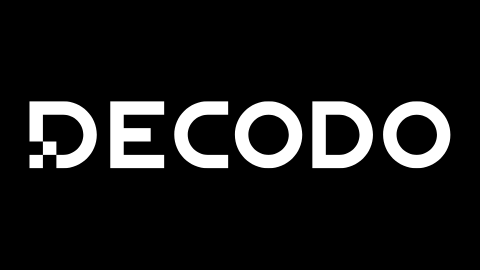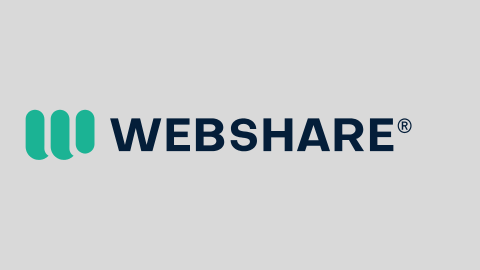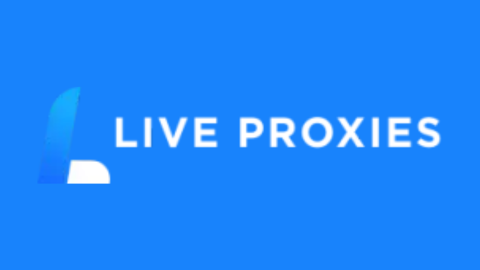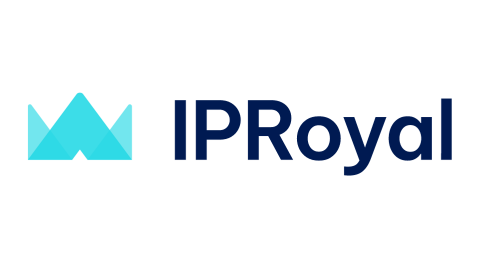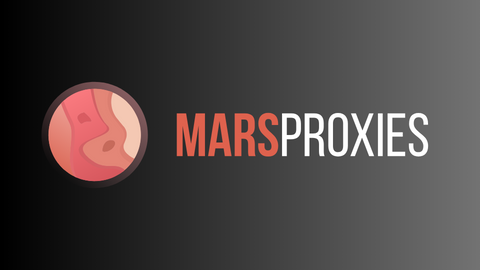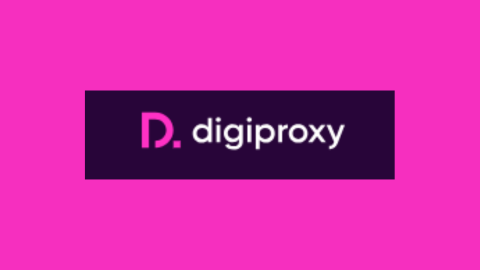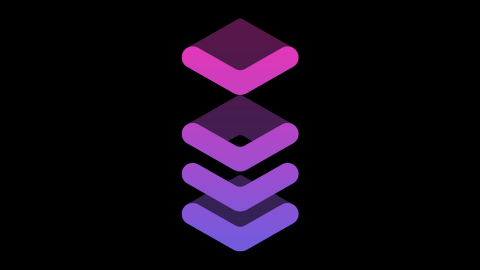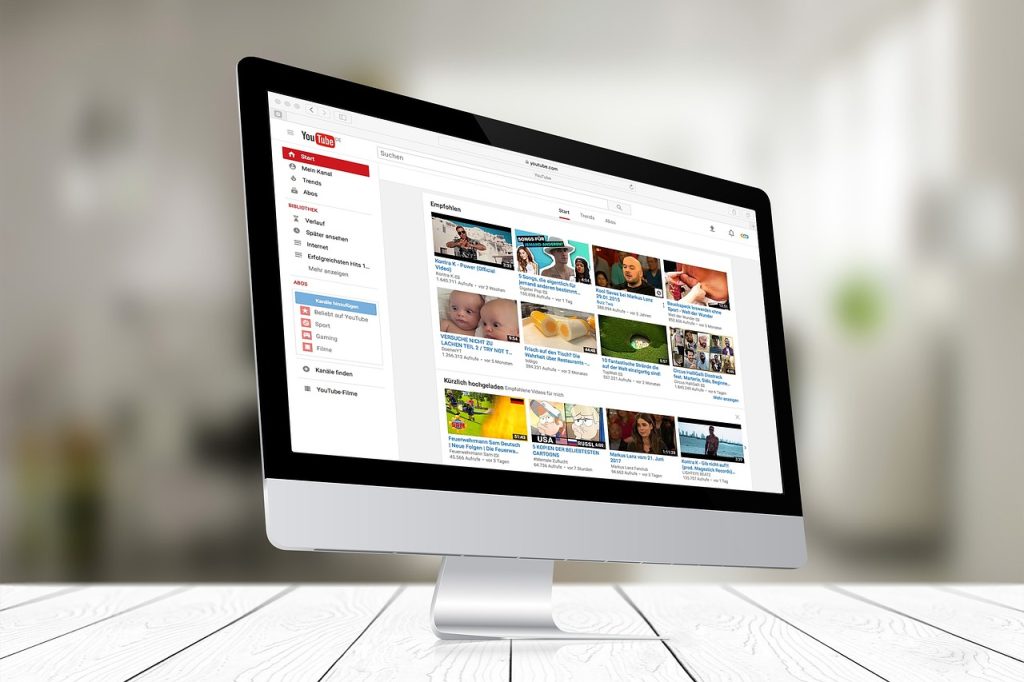Want the best YouTube scraper? Read on!
In the age of video-first content, YouTube is the largest video database and one of the most influential digital ecosystems in the world.
Whether you’re a digital marketer, SEO expert, data analyst, competitor researcher, or AI model trainer — you know that YouTube’s vast information can’t be ignored.
But YouTube doesn’t offer full transparency through its public API, and manual data collection is unsustainable for scale. That’s why people are turning to YouTube scraping — using automated tools to extract video metadata, comments, channel insights, and performance stats for analysis.
This detailed guide will walk you through:
- What a YouTube scraper is
- How scraping works safely in 2025
- The best YouTube scraper tools and providers
- The Editor’s Choice top 3 proxy + scraping brands
- Tips, use cases, legal notes, and integration workflows
Let’s dive into the world of the best YouTube scrapers in 2025. But first, let me answer the question – what is a YouTube scraper?
Table of Contents
🧠 What is a YouTube Scraper?
A YouTube scraper is a software tool, script, or service that automates the collection of publicly available data from YouTube pages. It simulates a user’s browser session or interacts with rendered HTML and DOM elements to extract information such as:
- Video title, description, and views
- Upload date, likes, and dislikes
- Video tags and categories
- Channel details (subscribers, video count)
- Video comments, replies, and usernames
- Suggested video recommendations
- Search result rankings
Scraping enables businesses and developers to build data pipelines, train AI models, analyze trends, and enhance decision-making with real-time YouTube data.
🔎 What Can You Do With YouTube Scraped Data?
| Use Case | Application |
|---|---|
| SEO Monitoring | Track keyword rankings on YouTube search |
| Competitor Analysis | Scrape stats from rival channels and videos |
| Sentiment Analysis | Mine and classify comment sentiment |
| Ad Intelligence | Detect video ads and brand placements |
| Trend Mapping | Aggregate video performance by niche or time |
| AI Dataset Generation | Feed video titles/descriptions into NLP models |
| Media Monitoring | Identify influencers or viral content early |
To scrape YouTube effectively in 2025, your stack should include:
1. Proxy Infrastructure
YouTube throttles IPs and serves CAPTCHAs aggressively. Use rotating residential or mobile proxies to stay undetected.
2. Scraping Engine
Use libraries like:
- Selenium for browser-based scraping
- Puppeteer/Playwright for JavaScript-heavy pages
- BeautifulSoup + Requests for light scraping
- Headless browsers to mimic user behavior
3. Parsing Logic
Use XPath, CSS selectors, or JSON parsing (for AJAX responses) to extract data from HTML.
4. Storage Pipeline
Send data to:
- CSV/Excel
- SQL/NoSQL databases
- Cloud storage (Google Sheets, Firebase)
5. Error & Throttle Handling
Implement retry logic, randomized delays, and error logs to minimize IP bans and rate limits.
🚀 Editor’s Choice: Top 3 Best YouTube Scraper Infrastructure Brands
Before we explore scraping tools and services, let’s highlight the top 3 providers that offer robust infrastructure and proxy networks optimized for scraping YouTube data at scale.
🥇 1. Oxylabs – Best for Enterprise-Grade YouTube Scraping Solutions
Category: Residential, Mobile, Datacenter, and AI-Powered Scraping Tools
Best For: Large-scale YouTube data extraction, comment mining, and competitor tracking
Trial: Unlimited trial for scraping tools (up to 2K results)
Overview
Oxylabs is known for its precision and power in handling complex scraping challenges. For YouTube scraping, it provides a Web Scraper API, residential proxies, and a specialized AI data parsing engine that reduces failed requests and keeps your operations undetected.
If you’re extracting large volumes of:
- Video metadata (title, views, likes)
- Comments (sentiment, language, keyword use)
- Channel uploads and keyword trends
…then Oxylabs is your best partner.
Why Oxylabs Rocks for YouTube:
- AI-powered dynamic HTML parsing
- Rotating IPs with geo-targeting
- Handles JavaScript-heavy pages
- Built-in CAPTCHA & IP block mitigation
- Scales up to billions of requests per month
⚠️ Please note: Oxylabs’ YouTube scraper does not offer any discounts.
🥈 2. Webshare – Best Budget-Friendly Proxies for Scraping Tools
Category: Datacenter & Rotating Residential Proxies
Best For: Small-scale YouTube scraping, bot integration, SEO projects
Trial: Free tier with limited resources
Overview
Webshare is the best-kept secret for developers and solo operators who want low-cost, reliable proxies to power their scraping bots. Whether you’re using Puppeteer, Scrapy, Playwright, or YouTube scraping Python scripts, Webshare proxies provide solid performance and very low block rates.
Most users can opt for affordable datacenter IPs for smaller-scale YouTube tasks, but more advanced users with specific tasks & bandwidth requirements in mind can now opt for YouTube proxies built specifically for bandwidth-intensive use cases like video scraping and AI dataset generation.
Their proxies are perfect for pulling:
- Channel stats
- Public playlists
- Video keywords and tags
- Upload history scraping
Why Webshare is Ideal:
- Pay-as-you-go and free plans
- High concurrency allowed
- Fast integration with scraping libraries
- Customizable geo-targeting and sessions
🥉 3. Decodo (formerly Smartproxy) – Best All-Around for YouTube API Bypass & Metadata Extraction
Category: All-in-one Web Scraping API
Best For: Mid-tier scraping setups, ad intelligence, AI training datasets
Trial: 7-day free trial with 1K requests
Overview
Decodo is an industry-standard solution that brings reliable IPs, powerful IP rotation infrastructure, built-in usage statistics, and tool integrations for video intelligence scraping. Rebranded from Smartproxy, they now offer an enhanced Web Scraping API with 100+ ready-made scraping templates.
Perfect for:
- Tracking YouTube SERPs
- Scraping metadata, transcripts
- Brand monitoring on YouTube
Why Decodo Is Reliable:
- User-friendly dashboard
- One-click scraping setup
- Ability to collect data in real-time or on-demand
- 100+ ready-made scraping templates
- 100% success rate
- 125M+ built-in proxies
- No proxy setup needed
- API access
- 24/7 tech support
- Extensive documentation and code examples
🛒 Other Great Proxy & Scraping Tool Providers
Let’s now look at other proxy and scraping providers that support YouTube data operations efficiently.
4. MarsProxies – Best for Bot Integration & Comment Extraction
Best For: YouTube bots, gaming content monitoring, social signals
Proxy Types: Datacenter, ISP, Residential
Overview
MarsProxies delivers low-latency proxies ideal for YouTube automation bots — from comment extractors to auto-watch tools. Popular among social marketers and gamers, MarsProxies support mass channel crawling with reliability.
5. IPRoyal – Best for Pay-As-You-Go Scraping Projects
Best For: Casual scraping, research projects, pay-per-GB users
Pricing: Starts from $0.80/GB
Proxy Types: Residential, Mobile, Static
Overview
IPRoyal is great for those who need short bursts of scraping without monthly contracts. Its per-GB billing makes it perfect for freelancers or student projects involving limited YouTube data collection.
6. Nodemaven – Best for Developer-Heavy Projects
Best For: Custom-built YouTube crawlers, APIs, and dev teams
Proxy Types: Residential, Datacenter
Overview
Nodemaven targets programmers and engineering teams with tools that support API access, authentication tokens, and dynamic scaling for backend crawling tasks.
If you’re building a YouTube analytics engine or internal dashboard for content strategy, Nodemaven is a fantastic fit.
7. ProxyEmpire – Best for Geo-Targeted YouTube Research
Best For: Location-specific scraping, region-based keyword monitoring
Proxy Types: Residential, Mobile
Overview
If you need to scrape YouTube content in local languages, trends, or region-specific rankings, ProxyEmpire provides broad country-level IP coverage with stable rotation.
8. Soax – Best for Clean IP Pools for YouTube Compliance
Best For: Corporate research, verified scraping use cases
Proxy Types: Residential, Mobile
Overview
Soax ensures a clean IP pool through ethical IP sourcing and KYC compliance. Ideal for white-hat scraping activities like media research and brand monitoring on YouTube.
2025 BEST PROXY SERVICES FOR YOUTUBE SCRAPERS
🔐 Legal & Ethical Considerations for YouTube Scraping
YouTube’s Terms of Service prohibit scraping in certain contexts, especially at scale. However, scraping public data for educational, research, or legal purposes is often allowed under fair use — depending on your jurisdiction.
Key Principles:
- Scrape only publicly available data
- Avoid scraping private or sensitive information
- Respect rate limits and user behavior
- Rotate IPs to prevent platform harm
- Use scraping ethically, not for spam or manipulation
Always consult a legal professional before launching large-scale scraping operations.
🧪 Tips for Successful YouTube Scraping in 2025
- ✅ Use rotating proxies to bypass IP bans
- ✅ Add browser fingerprint emulation with tools like Puppeteer-Stealth
- ✅ Avoid sending too many concurrent requests per IP
- ✅ Implement smart retry and delay logic
- ✅ Use CAPTCHA solvers or anti-bot handling libraries
- ✅ Randomize headers (User-Agent, Referer, Language)
- ✅ Parse YouTube’s HTML, not its API (if rate-limited)
- ✅ Automate cron-based scrapers to collect data daily
Best YouTube Scrapers: Frequently Asked Questions (FAQs)
What is a YouTube scraper, and how does it work?
A YouTube scraper is a tool or script that extracts publicly available data from YouTube, such as video titles, descriptions, channel info, views, comments, and upload dates. It works by sending HTTP requests to YouTube’s web pages or APIs and parsing the returned HTML or JSON to collect structured data. Some advanced YouTube scrapers also support JavaScript rendering, CAPTCHA bypass, and proxy rotation for scale and reliability.
Is it legal to use a YouTube scraper?
Yes, scraping public YouTube data is generally legal as long as it does not violate YouTube’s Terms of Service, overload their servers, or access non-public/private content. For commercial scraping at scale, it’s highly recommended to use a compliant solution (like Oxylabs or Decodo) and avoid unauthorized usage of YouTube’s internal APIs.
Do I need proxies for YouTube scraping?
Yes, if you’re scraping YouTube at scale (thousands of requests per hour), using proxies is essential to avoid IP bans or throttling. Premium providers like Webshare, Oxylabs, and Decodo (formerly Smartproxy) offer rotating residential or datacenter proxies that help distribute requests across multiple IPs for reliable and uninterrupted scraping.
What kind of data can I extract using a YouTube scraper?
You can extract a wide range of structured YouTube data, including:
- Video titles and URLs
- Channel names and metadata
- Upload dates and video durations
- Views, likes, and comment counts
- Video tags and categories
- Full comment threads (with timestamps)
- Transcripts and subtitles (where available)
Advanced scrapers may also detect trending topics, generate sentiment analysis from comments, or monitor influencer activity.
What are the best use cases for YouTube scrapers in 2025?
In 2025, YouTube scrapers are widely used for:
- Market research & competitor tracking
- Influencer discovery and outreach automation
- Sentiment analysis on comment sections
- Video SEO intelligence
- Trend detection for AI training models
- Academic research and media analytics
Agencies, brands, and data scientists leverage scrapers to turn video content into actionable insights.
READ ALSO: What is a Proxy Scraper? 10 Best Proxy Scraping Tools
What’s the difference between a YouTube Scraper and YouTube API?
YouTube’s official API provides limited, rate-limited access to data and often requires developer keys, while YouTube scrapers bypass these limitations to extract more data or perform deep scraping. However, APIs are more stable and officially supported, whereas scrapers offer greater freedom but must be carefully managed with proxy rotation and anti-bot handling.
Are there YouTube scrapers with no-code or low-code options?
Yes! Several platforms now offer no-code YouTube scraping tools, including cloud-based scrapers with intuitive dashboards or prebuilt workflows. These are perfect for marketers, researchers, and non-developers who want quick insights without programming. Some popular low-code options include Decodo’s dashboard, Webshare’s API presets, and Oxylabs’ no-code scraper templates.
Can I scrape YouTube Shorts and Community Posts too?
Yes, many modern scrapers now support YouTube Shorts, Community tab posts, and Stories by navigating to specific URL paths and parsing them like standard videos. However, extracting this type of content often requires JavaScript rendering and smart scrolling, which only advanced scraping tools can handle. Look for scrapers with headless browser support and dynamic page rendering to access these features effectively.
🏁 Final Thoughts: Choose the Best YouTube Scraper for Your Needs
In 2025, scraping YouTube is no longer just about hobby bots or rogue data gathering — it’s a critical tool for media intelligence, business analysis, AI research, and content strategy.
If you’re ready to start, your next step is to choose the right scraper infrastructure.
✅ Go with:
- Oxylabs for enterprise-scale scraping power
- Webshare for budget and ease of access
- Decodo for versatility and tool integration
- MarsProxies/IPRoyal/Nodemaven for niche or lightweight needs
With the right proxies, scraping logic, and ethical intent — the data on YouTube is yours to understand and act upon.
INTERESTING POSTS
- Buy Proxies: Choosing the Best Proxy Services for Any Use Case
- YouTube Scraper: The Ultimate Guide To Extracting Video Data At Scale
- Take Your Small Business To The Next Level With YouTube Marketing
- How To Watch YouTube Videos That Are Blocked In Your Country
- Google Scraper: How to Ethically and Efficiently Extract Search Data
About the Author:
Daniel Segun is the Founder and CEO of SecureBlitz Cybersecurity Media, with a background in Computer Science and Digital Marketing. When not writing, he's probably busy designing graphics or developing websites.




